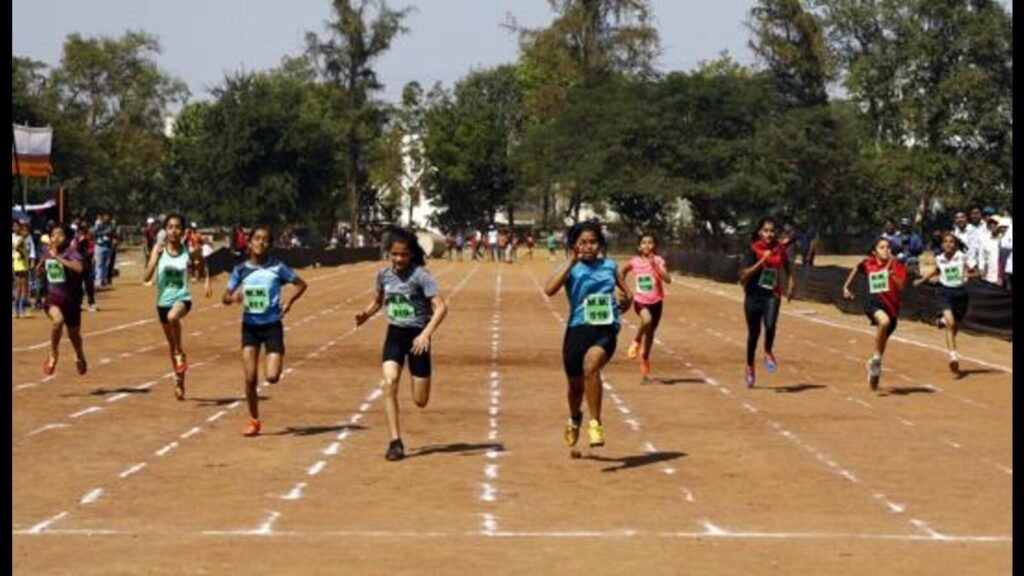
For decades, the menace of age fraud has been caught a shadow over Indian Sports, Distorting Fair Competition and Depriveing Young and Budding Athletes of Opportunities. The government has now taken decisive steps to address this problem.

Age Fraud – Where Athletes Manipulate Birth Records or Falsify Documents to Compete in Younger Age Categories – Has Long Eroded The Credibility of Competitions. While this is a global issue, its impact in India has been particularly severe, affecting talent development across discussions discussed as cricket, football, and badminton. Despite past efforts, enforcement gaps and outdated verification methods allowed the problem to person, Eroding Trust in the system.
To tackle this, the ministry of youth affairs and sports introduced the draft national code against age fraud in sports (NCAFS) 2025, a much-needed revision to the 2010 framework. While the objective of bot the codes remains the same, the 2025 version aims to reduce the problem by making some key additions and changes.
The revised code into changes in five key areas:
Age Verification: In NCAFS 2010, Medical Examinations Were the Primary Method for Age Verification, Requiring All Athletes Participating in Age-Restricted Competitions to Undergo Medical Assessments. However, this process was time-coonsumping, costly, and LED to Challenges in Enforcement. The 2025 Version Shifts Towards a Document-Based Verification System, Where Athletes must Submit Three Mandatary Documents-Birth Certificate, Aadhaar/APAAR ID, and School Certificate. This approach streamlines verification, enhances accuracy, and aligns with modern digital governance practices, while allowing medical tests for discrepancies.
Medical Examination: The 2010 Code relied on Traditional Medical Examination Methods Such as Physical, Dental, and Radiological Tests to Determine an athlete’s age. NCAFS 2025 Enhances Scientific Accuracy by Introducing The Tw3 Method for Bone Age Determination, with AI-Powered Bonexpert Technology for Initial Assessments and MRI-Based Forensic Edge Verification for appeals.
Identity Card System: The 2010 Code Required Identity Cards for Verified Athletes, but the system lacked real-time verification and was vulnerable to tampering. The 2025 version modernies this with QR-Coded Digital Identity Cards Linked to the National Sports Repository System (NSRS) Portal.
Appeal Mechanism: The 2010 Code Had a Single-Level Appeal, Handled by the Regional Director of the Sports Authority of India (SAI) or a National Sporting Federation (NSF) Committee, often Leading to Contentials. The 2025 version introduces a two-tier appeal system, allowing reasessesment by an applete medical authority and, if needed, escalation to the Central Appeals Committee (CAC) for A Faairer, Expert-Road Resolution.
Implementation Responsibility: Previous, Sai and NSFS Enforced Age Fraud Regulations, but gaps in monitoring person. However, under the 2025 version, NSFS Shall Appoint an Integrity Officer/Compliance Officer for every event. This will ensure real-time Vigilance, Document Verification, and Fraud Prevention, Making Enforcement Stronger and More Effective.
The 2025 Revision Introduces Striand Penalties, Including Suspension and Lifetime Debarment for Repeat offenders. It also estableses a whistleblower mechanism with financial innocents ( 2,000 reward and 5,000 refundable fee) to encourage reporting. Additionally, a one-time amnesty program allows athletes Six Months to Self-Declare their Correct Age without Penalties.
By Integrating Digital Identity Verification, Artificial Intelligence (AI) -Powned Medical Testing, and Stricter Penalties, NCAFS 2025 Creates A Robust Framework to Eliminal Age Frame With real-time oversight by Integrity Officer and Data-Driven Monitoring, The New Code Aligns India with International Best Practices, Strengthaning Its Global Creditation.
Sujata Chaturvedi is secretary, department of sports, government of India; Aatman shah is a public policy professional. The views expressed are personal







